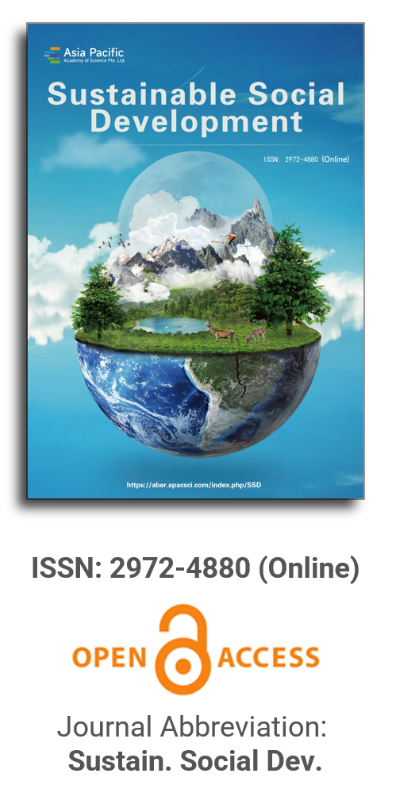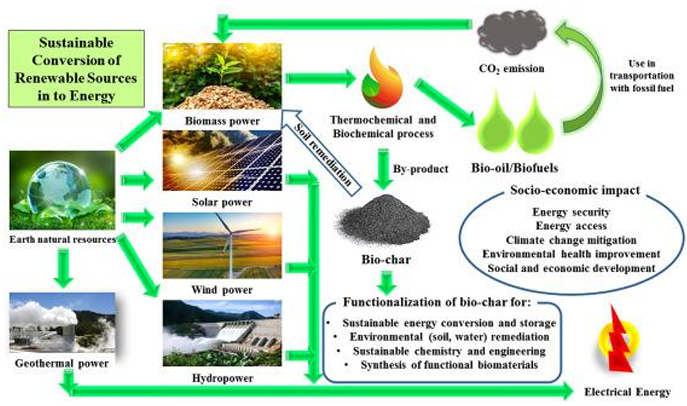
Asia Pacific Academy of Science Pte. Ltd. (APACSCI) specializes in international journal publishing. APACSCI adopts the open access publishing model and provides an important communication bridge for academic groups whose interest fields include engineering, technology, medicine, computer, mathematics, agriculture and forestry, and environment.

Rural tourism development path under the perspective of industrial integration—Case study of Tangwan township, Guixi City
Vol 2, Issue 1, 2024
Download PDF
Abstract
With the improvement of people’s economic income and the upgrading of tourism consumption demand, rural tourism is becoming more and more popular. Although the rural tourism industry is emerging all over the world, how to realize the high-quality development of the rural tourism industry is still a complex systemic issue. The integrated development of the industry is an important way to realize the high-quality development of the industry; therefore, this study tries to discuss the path of the integrated development of the rural tourism industry by analyzing the micro-case study. For the case study, the authors chose Tangwan Town, a rural tourism town in Guixi City, Jiangxi Province, China. We collected relevant qualitative and quantitative data through questionnaires, field research, and interviews, based on which we analyzed the SWOT and the obstacles to industrial development at the case site and gave suggestions on the path of integration development at two levels. Through the empirical study of the case study, we summarize the four priorities in the integrated development of the rural tourism industry, which are capital, operation, resources, and talents. This study further provides management implications for tourism management, visitor experience, and the further development of the rural tourism industry.
Keywords
References
- Lane B. What is rural tourism? Journal of Sustainable Tourism. 1994, 2(1-2): 7-21. doi: 10.1080/09669589409510680
- Chi X, Lee SK, Ahn YJ, et al. Tourist-Perceived Quality and Loyalty Intentions towards Rural Tourism in China. Sustainability. 2020, 12(9): 3614. doi: 10.3390/su12093614
- Zhu W, Shang F. Rural smart tourism under the background of internet plus. Ecological Informatics. 2021, 65: 101424. doi: 10.1016/j.ecoinf.2021.101424
- Dai ML, Fan DXF, Wang R, et al. Does rural tourism revitalize the countryside? An exploration of the spatial reconstruction through the lens of cultural connotations of rurality. Journal of Destination Marketing & Management. 2023, 29: 100801. doi: 10.1016/j.jdmm.2023.100801
- Tănase MO, Dina R, Isac FL, et al. Romanian Wine Tourism—A Paved Road or a Footpath in Rural Tourism? Sustainability. 2022, 14(7): 4026. doi: 10.3390/su14074026
- Latorre J, de-Magistris T, de Frutos P, et al. Demand for mycotourism products in rural forest areas: a choice model approach. Tourism Recreation Research. 2021, 48(3): 495-511. doi: 10.1080/02508281.2021.1926749
- Ritpanitchajchaval N, Ashton AS, Apollo M. Eudaimonic well-being development: Motives driving mountain-based adventure tourism. Journal of Outdoor Recreation and Tourism. 2023, 42: 100607. doi: 10.1016/j.jort.2023.100607
- Aziz S, Niazi MAK. Protecting coastal tourism through developing tourists’ environment responsible behaviour. Journal of Outdoor Recreation and Tourism. 2023, 44: 100698. doi: 10.1016/j.jort.2023.100698
- Durbarry R. Tourism and Economic Growth: The Case of Mauritius. Tourism Economics. 2004, 10(4): 389-401. doi: 10.5367/0000000042430962
- Teo P. Assessing Socio-Cultural Impacts: The Case of Singapore. Tourism Management. 1994, 15: 126-136. doi: 10.1016/0261-5177(94)90006-X
- Hassan TH, Salem AE, Abdelmoaty MA. Impact of Rural Tourism Development on Residents’ Satisfaction with the Local Environment, Socio-Economy and Quality of Life in Al-Ahsa Region, Saudi Arabia. International Journal of Environmental Research and Public Health. 2022, 19(7): 4410. doi: 10.3390/ijerph19074410
- Liu C, Dou X, Li J, et al. Analyzing government role in rural tourism development: An empirical investigation from China. Journal of Rural Studies. 2020, 79: 177-188. doi: 10.1016/j.jrurstud.2020.08.046
- Du X, Wang Z, Wang Y. The Spatial Mechanism and Predication of Rural Tourism Development in China: A Random Forest Regression Analysis. ISPRS International Journal of Geo-Information. 2023, 12(8): 321. doi: 10.3390/ijgi12080321
- Wang L, Yotsumoto Y. Conflict in tourism development in rural China. Tourism Management. 2019, 70: 188-200. doi: 10.1016/j.tourman.2018.08.012
- Mitchell CJA, Shannon M. Exploring cultural heritage tourism in rural Newfoundland through the lens of the evolutionary economic geographer. Journal of Rural Studies. 2018, 59: 21-34. doi: 10.1016/j.jrurstud.2017.12.020
- Krogmann A, Ivanič P, Kramáreková H, et al. Cultural Tourism in Nitra, Slovakia: Overview of Current and Future Trends. Sustainability. 2021, 13(9): 5181. doi: 10.3390/su13095181
- Pulina M, Giovanna Dettori D, Paba A. Life cycle of agrotouristic firms in Sardinia. Tourism Management. 2006, 27(5): 1006-1016. doi: 10.1016/j.tourman.2005.10.023
- Wang J, Zhou F, Xie A, et al. Impacts of the integral development of agriculture and tourism on agricultural eco-efficiency: a case study of two river basins in China. Environment, Development and Sustainability. 2022, 26(1): 1701-1730. doi: 10.1007/s10668-022-02781-x
- Santeramo FG, Seccia A, Nardone G. The synergies of the Italian wine and tourism sectors. Wine Economics and Policy. 2017, 6(1): 71-74. doi: 10.1016/j.wep.2016.11.004
- Lin CL. The analysis of sustainable development strategies for industrial tourism based on IOA-NRM approach. Journal of Cleaner Production. 2019, 241: 118281. doi: 10.1016/j.jclepro.2019.118281
- Byström J. Mining tourism in abandoned and existing mines in the Swedish Far North. Polar Record. 2022, 58. doi: 10.1017/s003224742100019x
- Kim MJ. Analysis on the Perception of Beauty-Agriculture Convergence Industry Development Potential -Focusing on employees in the senary industries of Jeju Special Self-governing Province. Journal of the Korea Convergence Society. 2017, 8: 371-383. doi: 10.15207/JKCS.2017.8.10.371
- Taleghani GR, Ghafary A. Providing a Management Model for the Development of Sports Tourism. Procedia - Social and Behavioral Sciences. 2014, 120: 289-298. doi: 10.1016/j.sbspro.2014.02.106
- Wernz C, Thakur Wernz P, Phusavat K. Service convergence and service integration in medical tourism. Industrial Management & Data Systems. 2014, 114(7): 1094-1106. doi: 10.1108/imds-04-2014-0115
- Kim MJ, Hall CM, Kwon O. Space tourism: Do age and gender make a difference in risk perception? Journal of Hospitality and Tourism Management. 2023, 57: 13-17. doi: 10.1016/j.jhtm.2023.08.019
- Boyd S. Cultural and Heritage Tourism in Canada: Opportunities, Principles and Challenges. Tourism and Hospitality Research. 2002, 3(3): 211-233. doi: 10.1177/146735840200300303
- Fabros MaGM, Lopez ELF, Roma MN. Dark tourism in the Philippine context: Indicators, motivations, and spectrum. Social Sciences & Humanities Open. 2023, 7(1): 100452. doi: 10.1016/j.ssaho.2023.100452
Supporting Agencies
Copyright (c) 2024 Chenjian Wang, Huimin Zhou, Fang Zhao, Yuansuo Zhang
License URL: https://creativecommons.org/licenses/by/4.0

This site is licensed under a Creative Commons Attribution 4.0 International License (CC BY 4.0).

Prof. Kittisak Jermsittiparsert
University of City Island, Cyprus






It is with deep regret that we announce the cancellation of the Forum on Sustainable Social Development & Computing and Artificial Intelligence, originally scheduled for June 15, 2025.

